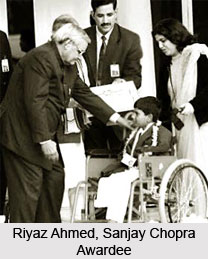 Ashoke Sen is the theoretical physicist who, after living years with a near-certainty that he would never get the Nobel Prize, has bagged prize for his research, the amount nearly thrice that of the Nobel.
Ashoke Sen is the theoretical physicist who, after living years with a near-certainty that he would never get the Nobel Prize, has bagged prize for his research, the amount nearly thrice that of the Nobel.
Early Life of Ashoke Sen
He was born in Calcutta, and is the elder son of Anil Kumar Sen, a former professor of physics at the Scottish Church College, and Gouri Sen, a homemaker. After completing his schooling from the Sailendra Sircar Vidyalaya in Kolkata, he earned his bachelor`s of science degree in 1975 from the Presidency College under the University of Calcutta, and his master`s three years later from the Indian Institute of Technology Kanpur. He did his doctoral work in physics at Stony Brook University.
Contribution of Asoke Sen
Asoke Sen, 56, a professor at Allahabad`s Harish Chandra Research Institute (HRI), is among nine scientists picked by a Russian billionaire entrepreneur, Yuri Milner, for the inaugural Fundamental Physics Prize, announced yesterday by Milner`s not-for-profit foundation. Asoke Sen has spent two decades refining a mathematical idea called the string theory that seeks to unify two bedrock theories of physics - quantum mechanics and gravity and to complete an unfinished task initiated by Einstein. The Milner Foundation said yesterday that Asoke Sen`s work has helped show that multiple string theories are all different versions of a single underlying theory.
Current knowledge of the universe is contained in the standard model of particle physics, which explains matter and the forces they produce. There are two great foundations to 20th-century physics. The first, gravity, as detailed by Albert Einstein`s theory of relativity, reveals the world of stars and galaxies. The second, quantum mechanics, delves into the invisible subatomic world that drives everything, from stardust to bacteria.
But unifying these two great scientific philosophies into one grand theory eluded Einstein.
String theory, as Asoke Sen once said in a presentation, is an attempt to realize Einstein`s dream, but it is now much more than that. It hopes also to, as it were, string together the four forces of nature-gravity (binds us to the earth, the planets to the sun), electromagnetism (sparks lightning, electricity, magnets) strong (binds quarks, and so keeps larger particles lashed together in the nucleus of an atom) and weak (binds nothing, but causes radioactive decay).
Asoke Sen notes that "in many ways string theory attempts to go beyond Einstein`s dream...an all-encompassing description of nature that works at large distances where gravity becomes important as well as small distances where quantum mechanics is important".
As string theory evolved in the 1980s and 1990s, it branched into various, confusing postulations. Sen`s singular contribution has been to unify multiple string theories and reveal a common foundation. It was to honour this achievement that Sen-an alumnus of Kolkata`s Presidency College and IIT-Kanpur-last month received the world`s most lucrative scientific prize, the only awardee from the developing world (seven scientists were from the US, one from France). The Milner prize, instituted by Yuri Milner, a Russian physics student, college dropout, venture capitalist and billionaire, focuses on fundamental physics and at $3 million (Rs.16.65 crore), pays nearly 300% more than a Nobel and stunned its awardees. More than the money, the Milner prize is important in the search for new frontiers because, unlike the Nobel, it can be given to scientists whose ideas have not yet been proved.
Prof Ashoke Sen, whose work seeks to unify two bedrock theories of physics and realize Albert Einstein`s dream, has become one of nine scientists to receive the inaugural Fundamental Physics Prize, launched by a Russian physicist-turned-Internet investor.
Sen, 56, a scientist at the Harish Chandra Research Institute in Allahabad, has received the $3-million prize for pioneering work on string theory, an attempt to unify the theories of gravity and quantum mechanics and an effort to complete a task that Einstein had begun. Asoke Sen, who graduated from Calcutta University, obtained a master`s from the Indian Institute of Technology, Kanpur, and a doctorate from the State University of New York. He has been a professor at the Harish Chandra Research Institute since 1995.
The prize announced by the Milner Foundation, an international not-for-profit organization set up by Russian investor Yuri Milner, carries a cash award nearly three times that of the Nobel Prize. The Foundation said Asoke Sen`s research had opened up "the path to the realization that the multiple string theories are different limits of the same underlying theory".
Asoke Sen`s work has essentially rescued string theory physicists from embarrassment. During the mid-1980s and 1990s, physicists had churned out several string theory versions, all of which appeared correct and thus drew scepticism from some fellow scientists.
The techniques that Asoke Sen developed were, however, picked up by other physicists to show that the multiple string theories were all different manifestations of the same underlying theory. "This prize came as a complete surprise; I see it as an encouragement to young people to come into fundamental physics. There is still so much more to be discovered."
Asoke Sen said. The other inaugural prize-winners include physicists who have helped advance ideas of the early universe, black holes and the mysterious dark matter, among other topics. The Milner Foundation said it was seeking to advance understanding of the universe at the deepest level by awarding annual prizes for scientific breakthroughs.






